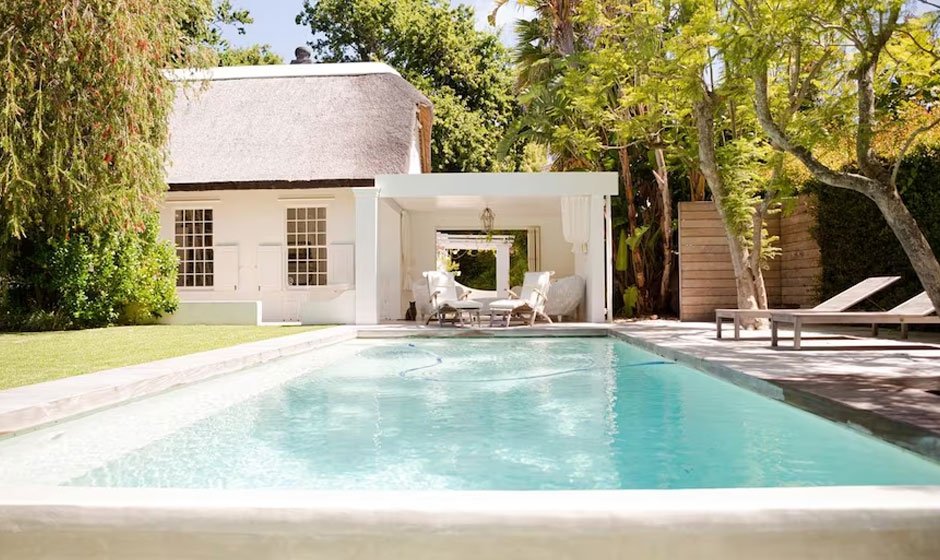Choosing a swimming pool design is an exciting yet challenging task. A swimming pool is a functional addition to your property and reflects your style and preferences. Making the right choice can be overwhelming with various shapes, sizes, materials, and features. We will help you steer the process of selecting the perfect swimming pool design for your needs, emphasizing factors beyond mere aesthetics.
Steps of selecting the perfect swimming pool design
1. Assess Your Space and Budget
Before diving into pool design, you must assess your available space and budget. Your available space will significantly influence the size and shape of your pool. Additionally, establishing a budget will help narrow your options and prevent overspending. It’s essential to factor in the initial construction costs and ongoing maintenance and operational expenses.
2. Consider Your Lifestyle and Needs
Every homeowner’s lifestyle and needs are unique; your pool design should reflect that. Contemplate how you plan to use the pool. Are you seeking a serene retreat, a family gathering spot, or a fitness center? Different designs cater to diverse purposes. For example, a lap pool is ideal for fitness enthusiasts, while a resort-style pool may be better for relaxation and entertainment.
3. Choose the Right Pool Shape
Pool shapes come in various forms, including rectangular, oval, kidney, freeform, and more. The choice of shape can greatly impact the overall aesthetics of your property. Rectangular and geometric shapes tend to have a more formal and contemporary appearance, while freeform shapes offer a more natural and organic look. Discuss how the shape complements your existing landscaping and architectural features.
4. Select the Pool Material
The choice of pool material affects your pool’s aesthetics and durability. Common pool materials include concrete, fiberglass, and vinyl liner. Concrete pools are highly customizable but may require more maintenance. Fiberglass pools are known for their low maintenance and quick installation, but they have limited design options. Vinyl liner pools are cost-effective but may require replacement over time. Evaluate the pros and cons of each material in relation to your budget and preferences.
5. Explore Pool Features
Exploring pool features is a crucial aspect of your design, as they can significantly enhance your swimming experience and imbue your pool with a unique personality. Popular features encompass waterfalls and fountains, which can create a soothing ambiance while masking unwanted noise and pool lighting that extends usability into the evening, crafting a captivating atmosphere. Depending on your climate, contemplate adding heating and cooling systems for year-round enjoyment, and consider built-in seating like benches or swim-up bars to provide comfort and convenience for both you and your guests. Furthermore, prioritize safety measures, including fencing, alarms, and pool covers, especially if you have children or pets. Additionally, the integration of automation systems allows you to effortlessly control various aspects of your pool, such as filtration, temperature, and lighting, all conveniently accessible through a smartphone app.
6. Think About Maintenance
Pool maintenance is an ongoing responsibility that should not be underestimated. The level of maintenance required can vary significantly depending on the pool type and features. Concrete pools, for instance, may demand more attention due to the need for regular resurfacing and maintenance of pool chemistry. Fiberglass pools are generally easier to maintain but may have limitations regarding customization. Vinyl liner pools may require periodic liner replacement.
7. Seek Professional Advice
Designing and constructing a swimming pool is a complex project that requires professional guidance. Confer with experienced pool designers and contractors who can provide valuable insights and help you make informed decisions. They can also assist in obtaining necessary permits and ensuring your pool design complies with local regulations.
8. Incorporate Landscaping
A well-designed pool should seamlessly integrate with your landscaping, assembling a harmonious outdoor space. Consider the placement of trees, shrubs, flowers, and hardscape elements around the pool area. Landscaping enhances the visual appeal and provides shade, privacy, and a natural backdrop.
9. Plan for Long-Term Sustainability
In an era of environmental consciousness, it’s paramount to regard the sustainability of your pool design. Opt for energy-efficient pool equipment, such as pumps and filters. Additionally, explore alternative pool heating options like solar panels. Proper pool cover usage can also reduce heat loss and water evaporation.
Choosing a swimming pool design is a significant decision that requires careful consideration of your space, budget, lifestyle, and preferences. It’s about aesthetics, functionality, maintenance, and sustainability. By assessing these factors and aspiring professional advice from Bella-Aqua Pools and Spas, you can ensure that your chosen pool design meets your needs and enhances the overall appeal of your property. Remember that a well-thought-out pool design can provide you and your family with years of enjoyment and relaxation.

